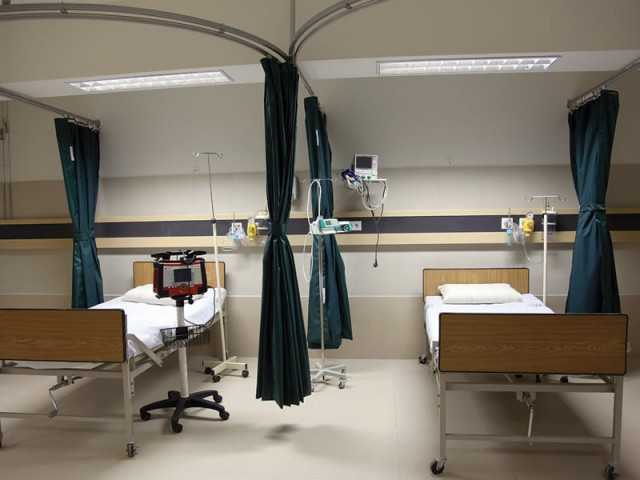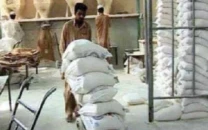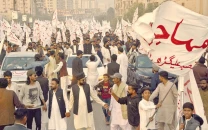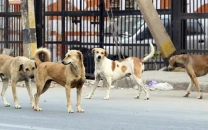Tertiary healthcare: A brand new casualty, but not the kind its doctors treat
PM to cut the ribbon for Jinnah hospital's renovated Accident & Emergency centre today.

Tertiary healthcare: A brand new casualty, but not the kind its doctors treat
The federally-funded Accident and Emergency department (A&E) at Jinnah Postgraduate Medical Centre sees about 1,000 patients a day. And that's on a day when there have been no bomb blasts, no natural disasters and minimal political violence. Most of those patients are admitted into a holding area where they receive basic aid while awaiting surgery or other assignments. The activity in this huge reception room is overwhelming. Stretchers are wheeled in and out, young doctors cluster in small groups, their bright dupattas collectively bent over clipboards, worried families hover nearby. Guards mill about, in one corner technicians peer into a microscope, and near the door rests a body swathed in a sheet.
Karachi's health needs have changed in the 22 years that Dr Seemin Jamali, head of the A&E, has been at Jinnah hospital. "We see more firearm victims now. We see ethnic violence, religious violence, people coming in with bullet-proof jackets..."
As one of the few hospitals in Karachi equipped to handle mass casualties, Jinnah's emergency centre needs more space. And thanks to a Rs40 million grant from Prime Minister Yousaf Raza Gilani, coupled with equipment and services from private donors, the hospital will unveil a newly refurbished and expanded A&E section on Friday. The prime minister himself is expected to fly in to cut the ribbon.
"It took less than a year to design and build," said Dr Jamali. "We took Rs40 million and built a facility worth Rs80 million. It's a great sense of accomplishment that you feel after this."
The new facilities will offer patients more privacy and access to better imaging equipment. Patients will be separated at admission - those who can walk unaided go to one side while those who require assistance will be redirected. There is a new pharmacy, an ICU, two high dependency wards, a disaster management ward, an orthopaedic bay and general wards, which saves patients from being shuttled back and forth between different buildings for different tests and procedures.
The facelift has also provided a separate area for Dr Jamali's pet project: "We get dog bites, cats, monkeys, donkeys, rodents," she said. Almost 50 bite cases are reported daily.
Jinnah's emergency area was renovated in 2008, but on February 5, 2010, a bomb exploded just outside the A&E, damaging the building, killing 18 people and injuring scores others just as staff was engaged with an earlier attack. Dr Jamali's staff were terrified, but they immediately began attending to the victims. Not a single staff member quit.
But that wasn't the first time that violence invaded the sanctity of Jinnah. Doctors are routinely threatened and harassed for not attending patients quickly enough or attending the "wrong" patients first.
When Sunni Tehreek's top leader was killed at Nishtar Park in 2006, his supporters stormed the ward, shouting and breaking furniture. They wanted to take his body, and they didn't want the hospital to have him declared dead.
As her staff struggled with the Nishtar Park casualties, Dr Jamali recalls how a thin teenage boy showed up outside her office, clutching something large and round to his chest. The object was wrapped in a t-shirt, and it was leaking blood. The boy insisted on speaking only with the head of emergency.
It was another first for Dr Jamali. She opened the t-shirt to reveal the severed head of a suicide bomber. The boy claimed he found it in a tree.
Because of incidents like these, the new facility has increased physical barricades against the street and mounted surveillance, 24 new CCTV cameras, so that hospital security can head off potential threats quickly.
It has been a rocky ride for Dr Jamali. "When I first came, the emergency ward was so dirty," she said. "Paan spit everywhere!"
And she'll never forget the first time she saw a live grenade.
"A man came in with the other victims of an attack on a TPO," she said. "He was shot in the neck."
Everyone assumed he was a victim like all the others - and in one regard he was. But when the attendants lifted the man's shirt, they found he was strapped with grenades.
"Once he was shot, he must have gotten scared or something," Dr Jamali said. The staff took pictures with their mobile phones, and a bomb squad was called in to disarm the grenade.
Just a day before the prime minister's expected arrival, Dr Jamali's office was only slightly less busy than the reception room outside its door. As she talked, she signed forms, sipped chai and took hurried calls. Propped behind her desk, on a filing cabinet, there's a framed photograph of her with Benzair Bhutto on the day that she came to thank Dr Jamali and her team for caring for those people who were injured in 2007, when Bhutto's homecoming parade was bombed. Two hundred and fifty victims were immediately evacuated to Jinnah.
"She came unannounced," recalled Dr Jamali. "Several big white cars pulled up, and suddenly I saw this tall woman in yellow getting out."
In the past, Dr Jamali and her staff have had to be resourceful and efficient under unimaginable stress and personal trauma. Despite everything - the gore and the grenades - Dr Jamali is hopeful. She slipped her reading glasses off her face and clapped her hands together.
"This new building, it's like a dream come true," she said. "It's like my baby!"
Perhaps the new facilities will alleviate a small degree of this stress, for both the caretakers and the patients.
Published in The Express Tribune, April 22nd, 2011.



















COMMENTS
Comments are moderated and generally will be posted if they are on-topic and not abusive.
For more information, please see our Comments FAQ